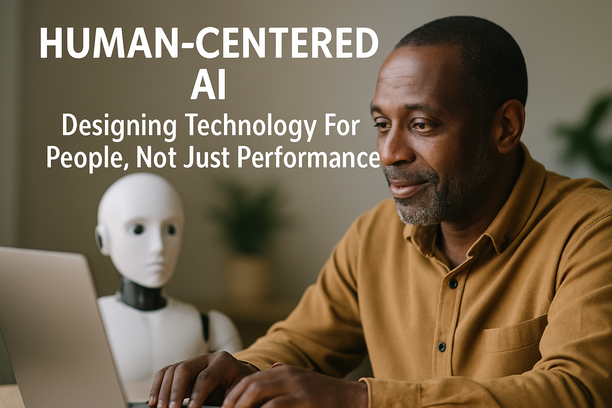Introduction to Explainability in AI
Explainability in artificial intelligence (AI) refers to the ability to make AI systems clear and easy to understand. Much like a step-by-step explanation of a recipe, explainability allows people to see the rationale behind decisions made by AI systems. This transparency is vital because AI often processes complex data and can function as a “black box,” where the decision-making process is hidden from users. By making AI explainable, users, developers, and other stakeholders gain insight into how and why decisions happen, increasing trust and confidence in these technologies.
Explainable AI helps bridge the gap between highly technical machine logic and human understanding, ensuring that those affected by AI outcomes can comprehend the factors influencing decisions. This foundational clarity fosters trust and widens acceptance of AI technologies across various sectors. For more on how safe and trustworthy AI works, visit FHTS – Transparency in AI like showing your work at school.
Why Explainability Matters: Trust and Transparency
The significance of explainability lies primarily in building trust and ensuring ethical AI use. When AI systems impact critical areas such as healthcare, finance, or public safety, understanding how these systems make decisions is essential to prevent errors, bias, and unjust outcomes. Interpretability supports accountability by making AI decisions open to scrutiny, which helps verify fairness, safety, and compliance with established rules.
Transparent AI creates a stronger bond between technology and its users. Without clear explanations of AI reasoning, users may feel uneasy, suspect bias, or doubt decision accuracy. Conversely, transparency reassures users that decisions are based on reliable data and allow early detection of mistakes. Organisations that adopt transparent AI demonstrate respect for ethical standards, fostering better relationships with customers, partners, and regulators.
To achieve transparency, AI systems often provide explanations about the data inputs, decision logic, and limitations through methods like visual aids or straightforward summaries. Expert teams, such as those at FHTS, combine advanced technical skills and ethical principles to develop AI systems designed with transparency and safety at their core, ensuring the technology benefits all stakeholders effectively. Explore further insights at FHTS – Transparency in AI like showing your work at school.
Methods and Techniques of AI Explainability
Several key methods enable AI explainability, making complex AI decisions more understandable and trustworthy. One approach involves interpretable models, which are designed with simplicity so their decision process is clear. For example, decision trees outline each step taken to reach a conclusion, allowing users to follow the logic easily.
Another technique is post-hoc explanations, which provide insights after the AI has generated a decision. These do not modify the model but clarify which factors had the most influence, such as feature importance highlighting the most critical data inputs.
Visualization tools also play a crucial role by transforming intricate AI data and decisions into visual formats like heatmaps or graphs. Such visualizations make abstract computations accessible, for instance showing which parts of an image the AI focused on during recognition tasks.
Together, these techniques contribute to transparent AI that users can understand and trust. Firms like FHTS guide organisations in implementing these explainability practices effectively, ensuring AI systems deliver powerful results without sacrificing clarity. To learn more about building reliable AI applications, see FHTS – What is AI?.
Challenges in Achieving Explainability
Creating explainable AI comes with several challenges. A primary obstacle is the complexity of advanced AI models, such as deep learning networks, which have numerous layers and parameters that are difficult to interpret. This intricacy often limits transparency, making it hard to discern exactly how decisions are reached.
Another challenge is the trade-off between accuracy and interpretability. Simpler models are easier to explain but may lack the accuracy of more complex, opaque models. Developers must balance the need for understandable AI with the desire for high-performing systems.
Additionally, bias in AI training data can propagate unfair decision-making. Detecting and mitigating bias requires ongoing careful design and monitoring to ensure fairness and trustworthiness. The presence of hidden bias poses a significant challenge for accountable AI.
Expert teams like those at FHTS specialize in overcoming these difficulties by blending strong technical know-how with ethical frameworks to develop AI systems that balance performance, transparency, and fairness. For deeper insights on these challenges, review FHTS’s Rulebook for Fair and Transparent AI, Why Human Feedback Is the Secret Sauce in AI, and Why Bias in AI Is Like Unfair Homework Grading.
Future Trends and Real-World Examples
The future of explainable AI is promising and rapidly evolving. Emphasis on clear, simple explanations accessible to non-experts is growing. This approach allows AI systems to “show their work,” making decision processes more transparent and reducing fears of mysterious black-box models.
Real-world applications are expanding across industries. In healthcare, explainable AI supports doctors by providing not just diagnoses but reasons behind them, ensuring medical professionals stay in control. In financial services, AI explainability helps analyze credit risk and detect fraud with justifications that satisfy customers and regulators.
Public safety and customer service sectors increasingly use explainable AI to improve decision quality and client confidence, integrating transparency to demonstrate accountability and enhance continuous improvement based on human input.
The successful implementation of explainable AI involves strong ethical frameworks and human oversight, a balance that expert teams help organizations achieve. By adopting these principles, businesses gain benefits including enhanced trust, regulatory compliance, and ethical AI use. Examples of effective AI design frameworks and agile practices can be explored at FHTS resources such as the Safe and Smart Framework, Safe AI Transforming Healthcare, and Combining Agile Scrum with Safe AI Principles.
Sources
- FHTS – Rulebook for Fair and Transparent AI
- FHTS – What is AI?
- FHTS – Why Bias in AI Is Like Unfair Homework Grading
- FHTS – Why Human Feedback Is the Secret Sauce in AI
- FHTS – Safe AI Transforming Healthcare
- FHTS – Safe and Smart Framework
- FHTS – Transparency in AI like showing your work at school
- FHTS – Combining Agile Scrum with Safe AI Principles


